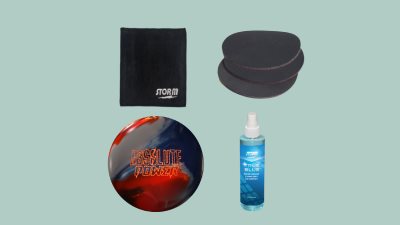Bowling balls are the unsung heroes of the game, yet maintenance is often underestimated. A well-maintained bowling ball can make all the difference in your performance on the lanes. That's why understanding the significance of bowling ball maintenance and knowing how to do it right is essential for every bowler. In this comprehensive guide, we'll delve into why bowling ball maintenance matters and provide step-by-step instructions on how to keep your ball in top condition.
Why Bowling Ball Maintenance Matters
Bowling ball maintenance isn't just about appearances; it directly affects your game. A well-maintained ball ensures consistent performance, better hook potential, and improved accuracy. Neglecting maintenance can lead to decreased performance and even damage to your ball. By taking care of your equipment, you're investing in your success on the lanes.
How to Clean a Bowling Ball
Cleaning your bowling ball is the first step in maintenance. Here's how to do it right:
- Gather your supplies: You'll need a microfiber cloth and a bowling ball cleaner approved by USBC
- Wipe down the ball: Use the microfiber cloth to remove any surface, dirt or oil from the ball.
- Apply the cleaner: Spray the cleaner onto the ball, ensuring even coverage.
- Wipe and rotate: Use the cloth to wipe the ball, rotating it to clean the entire surface thoroughly.
- Repeat if necessary: For stubborn residue, repeat the process until the ball is clean.
When to Clean a Bowling Ball
Regular cleaning is essential to maintain your ball's performance. Clean your ball after every bowling session to prevent oil absorption and ensure consistent gameplay. If you notice a decline in performance or visible residue on the ball, it's time for a more thorough cleaning.
Surfacing a Bowling Ball
Surfacing involves adjusting the coverstock of the bowling ball to enhance or reduce its hook potential. Here's how to surface a ball
- Assess the ball: Determine the desired surface texture based on lane conditions and your playing style.
- Choose the grit: Select a sanding pad with the appropriate grit for your needs. Abralon pads
- Sand the ball: Gently sand the surface of the ball in a consistent motion, paying attention to evenness.
- Test and adjust: After surfacing, test the ball on the lanes and make adjustments as needed to achieve the desired reaction.
Resurfacing a Bowling Ball
Resurfacing is a more intensive process that involves removing layers from the coverstock to restore the ball's original surface. Here's when to consider resurfacing:
- Visible wear: If your ball shows signs of wear, such as scratches or rough patches, it may benefit from resurfacing.
- Inconsistent performance: If your ball's reaction becomes unpredictable despite cleaning and surfacing adjustments, resurfacing may be necessary to restore its performance.
- Link to resurfacing guide
When to Surface vs. Resurface
Knowing when to surface or resurface your ball depends on its condition and your performance needs. Surface adjustments are ideal for fine-tuning the ball's reaction, while resurfacing is reserved for more significant changes or when the ball's surface is worn.
In conclusion, bowling ball maintenance is a critical aspect of the game that every bowler should prioritize. By cleaning your ball regularly, surfacing it as needed, and knowing when to resurface, you can ensure optimal performance and prolong the lifespan of your equipment. So, take care of your ball, and watch your game reach new heights on the lanes!
